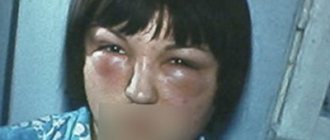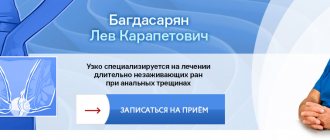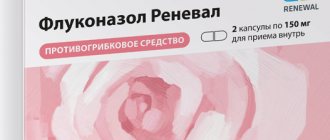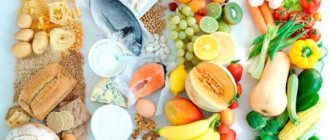Inflammation of the pancreas is accompanied by constant or periodic pain of various types. This is the main symptom of pancreatitis, which can develop in acute and chronic forms. At the first manifestation of girdle pain around the abdomen, you should consult a doctor for examination. In most cases, treatment with medications and long-term diet is indicated.
The role of the pancreas in the body
It is difficult to overestimate the role of this organ, because after its complete removal a person usually does not live longer than one year³.
But why does this happen? On the shelves of pharmacies you can find enzyme preparations that compensate for the digestive function of the gland, and the lack of hormones can be compensated for by introducing their synthetic analogues into the blood. Unfortunately, not everything is so simple, since the endocrine function of the organ is very difficult to compensate. The pancreas produces many hormones and enzymes. The regulation of their secretion is associated with a huge number of factors that currently cannot be taken into account in hormone replacement therapy. Today, medicine can only correct the deficiency of any component, but not the functioning of the entire organ. The structure of the pancreas and the principles of its operation, discussed below, will help to understand this point more fully.
5 facts about the pancreas
- The most common organ disease is pancreatitis.
- Pancreatic enzyme preparations are made from the pancreas of slaughtered cattle.
- The pancreas begins to produce digestive juice within 2-3 minutes after eating.
- The organ has a similar structure to the salivary glands, which is why it was previously called the abdominal salivary gland.
- The gland is capable of digesting itself.
Features of taking medications for pancreatitis
For pancreatitis, any self-medication is strictly contraindicated, even taking painkillers. The doctor determines the method of treatment, selects medications and their dosage strictly individually for each patient. The duration of treatment depends on the form of the disease, its severity, as well as on the patient’s body’s response to a particular drug. It is important not to forget about the medicine: take medications regularly and at the strictly designated time.
Photo: pressfoto / freepik.com
The structure of the pancreas
The pancreas is a fairly large organ (14-22 cm in length), which in a living person is located, contrary to its name, not under the stomach, but rather behind it. The “pancreas” was named because of its displacement under the stomach after a person’s death. It is also interesting that it is located separately from most digestive organs in the so-called retroperitoneal space, “settled” in it next to the kidneys and large vessels.
The structure of the pancreas consists of a head, body and tail. Its head adjoins the duodenum, and its tail approaches the spleen. Externally, the organ has a lobular appearance. Each such lobule is a functional unit of the gland (acinus), which consists of secretory cells and has its own small duct. The small ducts of each lobule unite into larger ones, and then flow into the main excretory duct, which runs in the center of the organ along the entire length.
Figure 1. Structure and topography of the pancreas. The red dotted line indicates the boundaries of the head, body and tail; black dotted line - ductal system of the gland. The bile ducts are marked in green. Illustration by Danila Melnikov
In the area of contact between the head of the pancreas and the duodenum, the above-mentioned excretory duct opens into the cavity of the latter. Thus, pancreatic juice formed in the lobules enters the intestine through the excretory duct.
How are the pancreas and biliary system related?
Figure 1 shows that another large duct, called the common bile duct, flows into the excretory duct of the pancreas. Since both ducts have one outlet into the intestine, with cholelithiasis it is possible to block not only the bile ducts, but also the pancreatic duct system. The rule also works in the opposite direction: with neoplasms of the pancreas, the common bile duct may be blocked. It is for this reason that jaundice can be a symptom of both diseases.
Endocrine part of the pancreas
In addition to the lobules with exocrine cells involved in the production of pancreatic juice, the gland has so-called pancreatic islets. They are also called the islets of Langerhans in honor of the scientist who discovered them. These are small clusters of cells that are “scattered” inside the organ, mainly in its tail part. These cells do not have ducts, since their secretions are absorbed by adjacent microvessels and enter directly into the blood. The main products of pancreatic islets are hormones: insulin and glucagon.
Thus, the pancreas essentially combines two completely different organs: digestive and endocrine. Glands of this type, which remove secretions through ducts and at the same time secrete hormones into the blood, are called mixed secretion glands.
Obesity and pancreatic diseases
In addition to the fact that acute pancreatitis develops more often in obese individuals, the latter also contributes to the development of type 2 diabetes mellitus. With this form of diabetes, there is no direct damage to the pancreas. However, tissue resistance to insulin develops, which ultimately leads to hyperglycemia and the corresponding symptoms described above. Therefore, it is important to eat in moderation, watch your caloric intake and be physically active.
Our services
The administration of CELT JSC regularly updates the price list posted on the clinic’s website. However, in order to avoid possible misunderstandings, we ask you to clarify the cost of services by phone: +7
| Service name | Price in rubles |
| Ultrasound of the abdominal organs (liver, gall bladder, pancreas, spleen) | 3 800 |
| Pancreatocholangiography | 4 500 |
| MSCT of the abdominal cavity and retroperitoneal space of the abdomen | 6 000 |
All services
Make an appointment through the application or by calling +7 +7 We work every day:
- Monday—Friday: 8.00—20.00
- Saturday: 8.00–18.00
- Sunday is a day off
The nearest metro and MCC stations to the clinic:
- Highway of Enthusiasts or Perovo
- Partisan
- Enthusiast Highway
Driving directions
Functions in the body
The pancreas has two fundamentally different functions: exocrine and endocrine. In this regard, there is a complete correlation with the structure of the organ, as we have seen above. Let's look at each of the functions separately.
Exocrine function
The prefix “exo-” translated from Greek means outside, outside. In anatomy, exocrine glands are called glands that have ducts and the secretion of which is released through them into various cavities. In this case, pancreatic juice flows through the pancreatic duct and enters the intestine. Pancreatic juice is a liquid consisting of water, sodium bicarbonates and enzymes. Each of the components has a meaning:
- Sodium bicarbonate is a substance necessary to neutralize the aggressive acidic contents that flow from the stomach into the intestines. The thing is that acid is a damaging factor for the intestinal mucosa. Therefore, when hydrochloric acid as part of a bolus of food enters the intestine, it immediately reacts with the aforementioned bicarbonate and becomes harmless.
- Enzymes refer to special protein structures that break down food components: proteins, fats and carbohydrates. For each of these nutrients, pancreatic juice contains its own enzymes that break them down into simpler compounds. For carbohydrates - amylase, for proteins - trypsin and chymotrypsin, for fats - lipase and phospholipase. This is necessary for the reason that the intestinal mucosa is not able to absorb nutrients in their original form.
- Water is a universal solvent and an ideal medium for the remaining components.
In the absence of bicarbonates, gastric contents would form ulcers in the intestines. A lack of enzymes would lead to the inability to obtain the necessary nutrients and, as a consequence, to various metabolic disorders. It is these processes that occur in the body when the gland duct is blocked by a tumor, a stone, or when most of the organ is destroyed (with chronic pancreatitis).
Why doesn't the pancreas digest itself?
This question is quite reasonable, because pancreatic tissue, like all other organs and like the food we eat, consists of proteins, fats and carbohydrates. However, pancreatic juice enzymes normally do not cause any damage to the gland. The thing is that enzymes are initially secreted in an inactive form. Only after the enzymes in pancreatic juice enter the intestines do they become activated. The enzyme enteropeptidase, produced by the intestinal mucosa, is responsible for this process.
Endocrine function
The prefix “endo-” has the opposite meaning - in, inside. The endocrine part of the pancreas (pancreatic islets) secretes several hormones directly into the blood, the main ones being insulin and glucagon.
The importance of insulin for the body
Insulin is one of the most significant hormones in the human body. The main function of this substance is the distribution of glucose from the blood to organs and tissues. The hormone is produced especially actively in the first few hours after eating.
Figure 2. Functions of insulin in the body. Image: Ismail Jarmouni / Wikipedia (CC BY-SA 4.0)
During the digestion of food, complex carbohydrates are broken down into simple molecules, and glucose is the main product of this process. Glucose is the main energy substrate for almost all cells in the body. Without it entering the cells, their work will stop, just as a steam locomotive will stop without coal. In this comparison, insulin acts as a fireman throwing coal into the firebox of a steam locomotive. In addition to carbohydrates, insulin takes part in fat and protein metabolism. Without this hormone, the synthesis of the body's own proteins and fats is disrupted.
We can talk about the functions of insulin for a long time. However, it is very clear what happens to a person when this hormone is not produced or does not work for other reasons, which happens in patients with diabetes. All organ systems suffer: cardiovascular, immune, nervous - almost all organs are affected by the lack of glucose supply. The exception is the brain, which can take up glucose from the blood even without insulin. But as diabetes progresses, the brain also suffers damage due to vascular damage.
Glucagon and its functions
Glucagon is a complete insulin antagonist. If insulin stimulates the entry of glucose into cells and the synthesis of proteins and fats, then glucagon reverses these processes. The need for this arises during the period of fasting in order to release nutrient reserves into the blood from the depot and thereby constantly maintain a certain concentration in the blood. This is especially true during physical activity to ensure that fatty acids and glucose enter the bloodstream to fuel muscles. Insulin and glucagon are not produced separately; these hormones always work in pairs, clearly regulating metabolic processes in the body.
Symptoms of pancreas problems
Symptoms of pancreatic diseases vary greatly depending on the severity of the pathological process. The most common acute condition is acute pancreatitis. As for chronic diseases, these are mainly chronic pancreatitis, cysts and tumors. Type 1 diabetes mellitus stands apart, in which autoimmune damage to the endocrine apparatus of the gland occurs.
Figure 3. Proper nutrition to prevent pancreatitis. Source: BelSU
Symptoms of acute pancreatitis
Acute pancreatitis is a dangerous condition that is accompanied by destruction of the pancreas due to its self-digestion. This occurs due to a violation of the outflow of pancreatic juice and an increase in pressure within the ductal system, which ultimately gradually leads to the activation of enzymes before secretion into the intestine. The initial symptoms of acute pancreatitis are as follows:
- Sharp, sudden pain in the upper abdomen. The pain syndrome is distinguished by: high intensity, constancy, often encircling in nature. Less commonly, the pain spreads to the entire abdomen and very rarely is absent altogether.
- Specific taste in the mouth.
- Nausea.
- Repeated vomiting.
- Bloating.
- Yellow-bluish spots on the abdomen (rare).
Of these symptoms, the most persistent and constant is pain. The girdling nature of the pain is relatively specific for pancreatitis. The presence of other manifestations is variable. For this reason, acute pancreatitis in the initial stages is difficult to distinguish from other acute diseases of the abdominal cavity. However, the appearance of these symptoms 12-48 hours after drinking a significant amount of alcohol or some time after eating a large meal makes the diagnosis highly likely.
Important!
The described symptoms, especially pain, are a reason to seek help from an ambulance. Acute abdominal pain, combined with or without other symptoms, requires examination by a surgeon and urgent instrumental diagnosis.
Symptoms of chronic pancreatic diseases
Chronic pancreatitis
Chronic pancreatitis is a slowly progressive disease in which functional pancreatic tissue is replaced by nonfunctional connective tissue. Possible symptoms:
- Dull, aching pain in the upper abdomen, may be of a girdling nature.
- Nausea.
- Vomit.
- Alternating constipation and diarrhea.
- Loss of body weight.
- Yellowness of the skin.
- Symptoms of diabetes.
With an exacerbation of the process, the symptoms become the same as in acute pancreatitis.
Figure 4. Healthy pancreas and changes in it characteristic of acute and chronic pancreatitis. Image: Pikovit/Depositphotos
Pancreatic cysts and tumors
Pancreatic cysts are cavities with fluid that can be located both in the gland itself and in the tissues surrounding it. These formations can be congenital or appear as a result of various pathological processes. Small cysts do not manifest themselves in any way. Symptoms appear when the cyst becomes infected, becomes large, or causes pressure on nearby organs. Among the manifestations:
- Dull aching pain in the upper abdomen, constant or paroxysmal, can be girdling.
- Nausea.
- Vomit.
- Weakness and weight loss.
- Periodic increase in body temperature.
- Palpable tumor formation in the abdomen.
- Yellowness of the skin.
Tumors, both benign and malignant, are clinically identical to cysts. The difference is that malignant tumors more often cause jaundice, which is usually the reason for visiting a doctor. The appearance of pronounced symptoms in the case of malignant tumors, unfortunately, indicates an advanced process.
There are also special hormone-producing tumors of the pancreas. The most common of them is insulinoma. As the name suggests, this neoplasm is capable of uncontrollably secreting insulin into the blood, which causes low blood glucose concentrations. The following symptoms develop:
- Tremor.
- Weakness.
- Sweating.
- Constant feeling of hunger.
- Confusion, memory impairment.
- Epileptic seizures.
- Coma.
If you eat something sweet, these symptoms are smoothed out or disappear.
Symptoms of diabetes
Type 1 diabetes mellitus develops as a result of autoimmune damage to the insular apparatus of the pancreas. Because of this process, insulin is not secreted into the blood after eating, which leads to excessive concentrations of glucose in the blood (hyperglycemia). This manifests itself symptomatically:
- Increased urination.
- Thirsty.
- General weakness and fatigue.
- Increasing incidence of infectious diseases.
- Slow healing of wounds.
Typically, patients seek help at this stage of the disease. However, as the disease progresses, the number of symptoms may increase significantly due to the systemic nature of the disorders.
What to do?
First of all, it is worth noting that you cannot self-medicate, you must contact a specialist. You should not take painkillers or put heat on your stomach - this can only worsen the process. You need to see a therapist or gastroenterologist, undergo an ultrasound, ECG and MRI. The doctor may also prescribe additional tests or examinations if necessary.
If the disease is diagnosed at an early stage, drug treatment will help. If the disease is advanced, surgical intervention is prescribed. In any case, there is no time to waste, you need to contact specialists and not self-medicate!
What is the pancreas afraid of?
The two main “enemies” for the pancreas are alcohol and gallstone disease. Both cause acute pancreatitis in 90% of cases³.
The effect of alcohol on the pancreas
Alcoholic pancreatitis is common, but how does alcohol contribute to inflammation in the pancreas? The thing is that it affects the gland through three effects:
- Spasm of the sphincter of Oddi, a muscle that closes the outlet for pancreatic juice in the duodenum.
- Increased secretion of pancreatic juice by exocrine cells of the gland. This effect is especially pronounced when combining alcohol intake with fatty foods.
- Increasing the permeability of the ductal system for protein substances, which are pancreatic juice enzymes.
Thus, all conditions are created for the premature activation of digestive enzymes, which leads to the development of pancreatitis.
Alcohol is the main enemy of the pancreas. Photo: alexlmx/Depositphotos
Gallstones and pancreatitis
The connection between the common bile duct and the exit pancreatic duct has already been mentioned above. Because of this anatomical feature, stones in the biliary system can interfere with the release of pancreatic juice, which becomes the cause of biliary pancreatitis. Thus, the “enemies” of the gallbladder are also those of the pancreas. Common causes of gallstone disease are:
- Long breaks between meals.
- A diet high in fat and cholesterol, fried foods.
- Taking combined oral contraceptives in women.
- Obesity.
Is it possible to cure pancreatitis forever?
The likelihood of recovery from pancreatitis depends on the form of the disease and its cause. Sometimes a mild form is caused by eating a lot of fatty foods or drinking alcohol. In this case, the inflammation can go away on its own without leaving any traces: excess fluid will not form around the organ, the ducts will not be blocked, which means enzymes will not accumulate in the gland.
Another thing is alcoholism, complications of gallstone disease, the presence of inflammation or tumors in other organs of the digestive system. Pancreatitis as a concomitant disease requires strict medical supervision. If the situation is advanced: the structure of the organ is changed or part of it dies (pancreatic necrosis), then there is no talk of cure. After completing a course of mandatory drug therapy, patients will have to undergo maintenance therapy, a strict diet, and a complete cessation of alcohol and smoking. According to doctors, the patient should be monitored for at least three months. Physical activity will become a good habit. Physical education improves metabolic processes, helps control weight and cleanses toxins.
Maintaining proper pancreas function
Unfortunately, not all pancreatic diseases have developed preventive measures, and some of these diseases are genetic in nature (for example, type 1 diabetes). But you can successfully prevent the most common pathology - acute pancreatitis.
To do this, first of all, you need to give up excessive alcohol consumption and adjust your diet. You should not abuse products such as:
- Rich bread.
- Fatty meats.
- Pork lard, beef and lamb fat.
- Sour vegetables and fruits.
- Ice cream, confectionery with cream.
- Fatty and spicy sauces.
- Deep fried food.
- Highly carbonated drinks.
- Strong coffee and cocoa.
- Products with artificial colors and preservatives.
For patients with chronic pancreatitis, it is better to try to exclude these foods from the diet completely. It is also recommended to avoid long breaks (more than 4-5 hours) between meals.
Drug treatment of pancreatitis in adults
Medicines play an important role in the treatment of pancreatitis. They carry several functions at once:
- restoration of enzyme deficiency,
- restoration of hormonal levels,
- improvement of metabolic processes,
- fight inflammation
- preventing spasms,
- normalization of blood circulation,
- pain relief,
- compensation of water-electrolyte losses and plasma losses.
The range of prescribed medications can be large; it is important to strictly follow the doctor’s instructions and take all necessary medications on time.
6 tips to help you remember to take your medications
Many drugs for pancreatitis need to be taken regularly, without missing the next dose. To quickly adapt to life during illness, follow these simple tips:
- It is important to take digestive enzymes and some other medications before meals. At first, it is useful to say to yourself: “First medicine, then food.” The idea is to make taking your medications as routine as washing your hands and using a tissue.
- Use a medication organizer. The cells in it can be associated with the time of day or the next meal; some organizers are equipped with a timer and can sound a sound signal. At the end of the month, using the pill box, it is easy to track whether all medications were taken on time (Fig. 2).
- Keep the tablets in a visible place. Don't forget to put them in your bag when you leave home. If you use a lunch box, place your pills in or next to it.
- Tell your friends and family about your illness. Someone close to you can tell you to take your medicine on time if you forget about it.
- Listen to yourself. Renewal of symptoms may clearly indicate missed medications.
- Some medications are better taken twice than not taken at all. Consult with your doctor which of your tablets can be taken in double doses without harm to your health, so you will not be afraid to take the tablet again if you do not remember when you took the medicine.
Figure 2. Medicine organizer. Source: freepik.com
Features of prescribing drugs for pancreatitis in women
Acute pancreatitis in pregnant women is a rare occurrence. Research suggests only three cases out of 10,000. However, as pregnancy progresses, the risk of developing the disease increases. Therefore, the treatment of such patients should be approached very carefully.
There is no agreement among doctors regarding the use of antibiotics during pregnancy. When choosing a medication, the doctor takes into account the severity of the disease, associated complications, and gestational age. In some cases, a positive outcome for the mother is the decisive factor in prescribing antibiotic therapy, even despite the risks of impaired fetal development. In the absence of infection in the bile ducts, as a rule, antibiotics are not prescribed.
Mild forms of pancreatitis may go away on their own. The doctor prescribes antihyperlipidemic drugs, insulin, heparin and diet. In severe cases, the question of termination of pregnancy comes up. The decision depends on many factors and is made by the doctor in each individual case.
Venous parenteral nutrition catheters may cause pregnancy complications. Enteral feeding is preferred, using a tube that passes through the nose and esophagus into the intestines.
Drug treatment of pancreatitis in children
Doctors agree that pancreatitis in children is difficult to diagnose. The reasons for its appearance differ from cases with adults, but the disease itself is more treatable.
Most often, pancreatitis in children occurs against the background of other diseases. Thus, the causes may be inflammation of other organs: the stomach and duodenum (gastroduodenitis), gall bladder (cholecystitis), intestines (enterocolitis), or peptic ulcer. Other causes include the use of certain medications, anatomical features of the gastrointestinal tract, and abdominal trauma.
Treatment is aimed at eliminating the cause of the disease and preventing dangerous consequences. Children are prescribed the same medications as adults. The dosage of each medication is determined by the doctor.
Diet is the basis of treatment of childhood pancreatitis. Overeating or poor nutrition (excessive amounts of canned and fatty foods) can trigger inflammation. It is important to follow fractional meals in small portions, limit the amount of fat, sugar and salt, and absolutely exclude fried and pickled foods, sweet carbonated water, chocolate and ice cream from the diet. For more information about nutrition for pancreatitis, read the article “Diet for pancreatitis.”
Sources
- Guyton, A.K. Medical physiology / A.K. Guyton, J.E. Hall / Per. from English; Ed. IN AND. Kobrina. - M.: Logosphere, 2008. - 1296 p.: ill.
- Prives M. G., Lysenkov N. K., Bushkovich V. I. / Human Anatomy. — 12th ed., revised. and additional - St. Petersburg: Publishing house SPbMAPO, 2006. - 720 p., ill.
- Surgical diseases: Textbook / M. I. Kuzin, O. S. Shkrob, N. M. Kuzin, etc.; Ed. M.I. Kuzina. — 3rd ed., revised. and additional - M.: Medicine, 2002. - 784 p.: ill.
- Erika F. Brutsaert, MD. Diabetes mellitus // MSD Handbook - 2019.
- Imaeva A.K., Mustafin T.I., Polovinkina S.R. MORTALITY AND MORTALITY INDICATORS IN ACUTE PANCREATITIS AS AN INDICATOR OF THE STATE OF MEDICAL CARE AT THE REGIONAL LEVEL // Problems of social hygiene, health care and history of medicine. 2021. No. 6.










